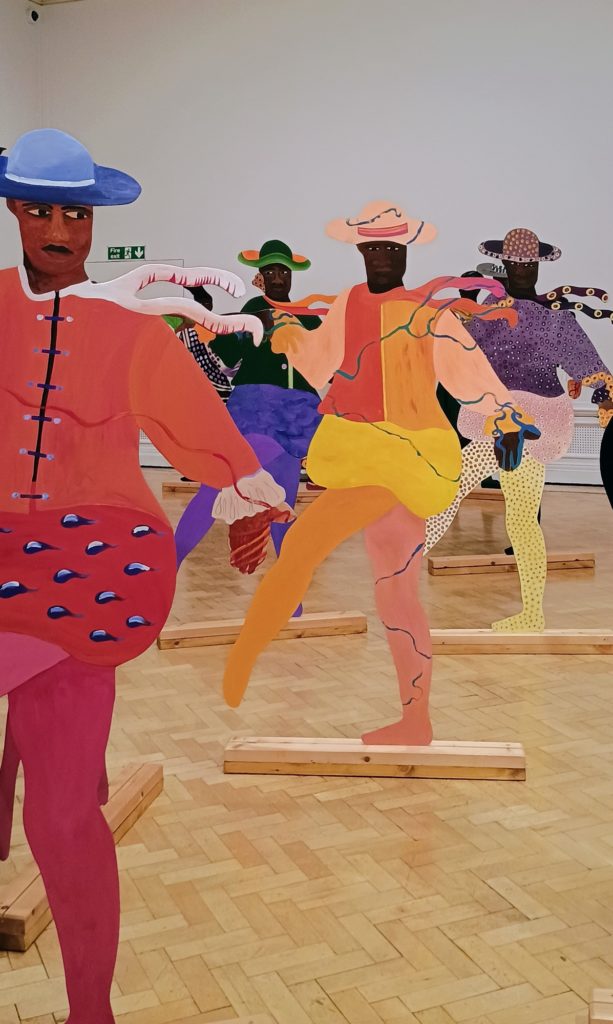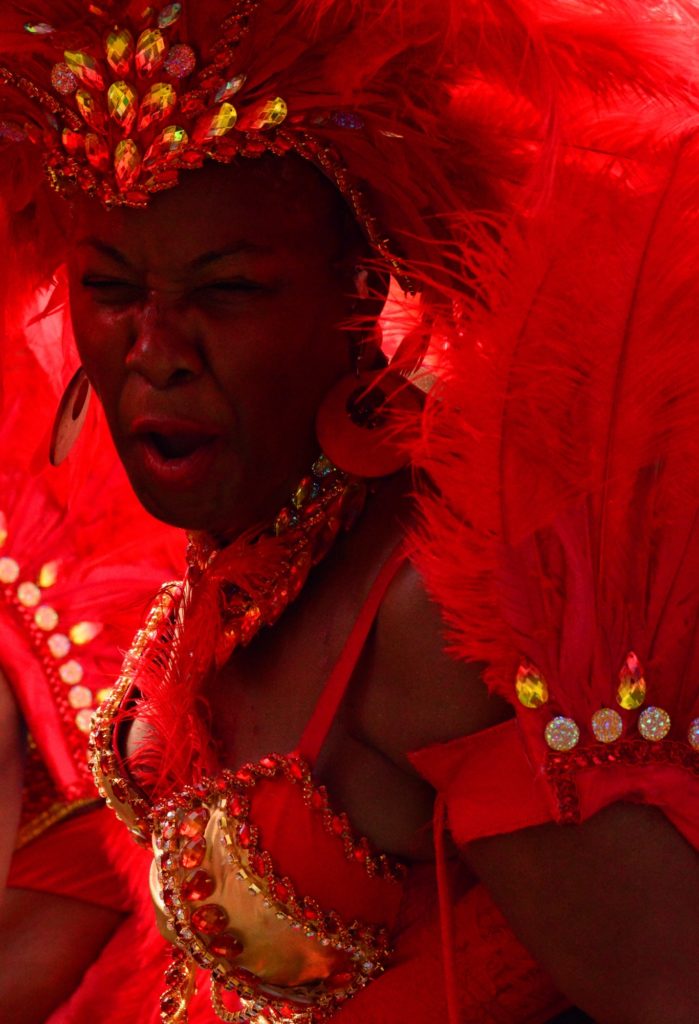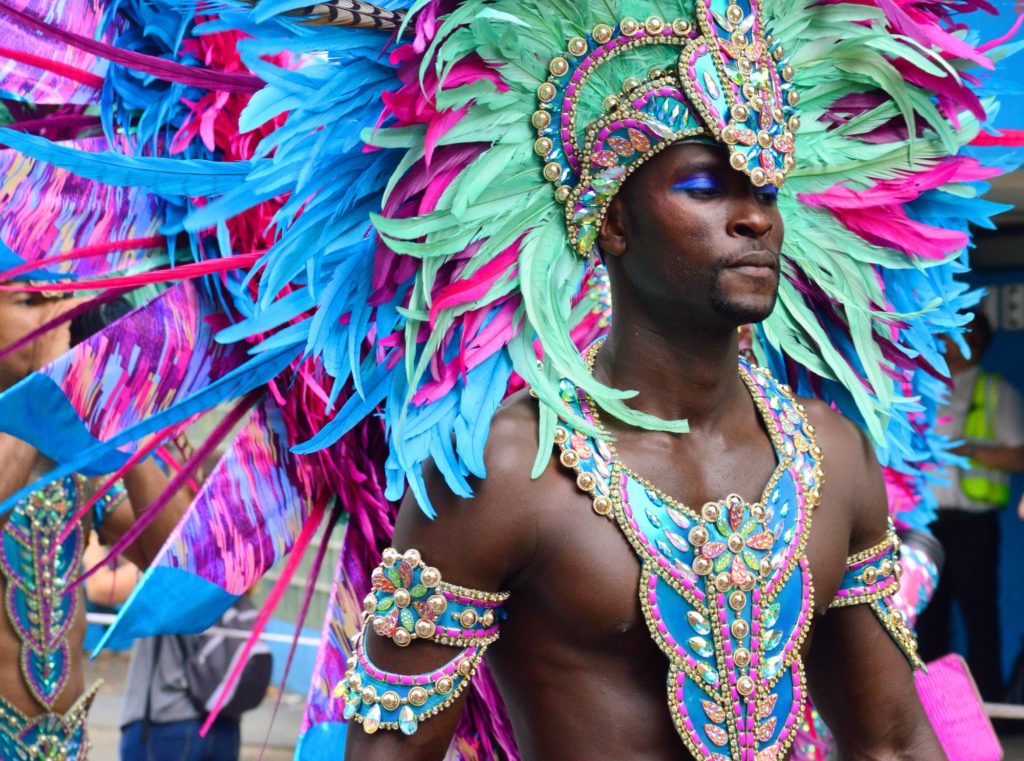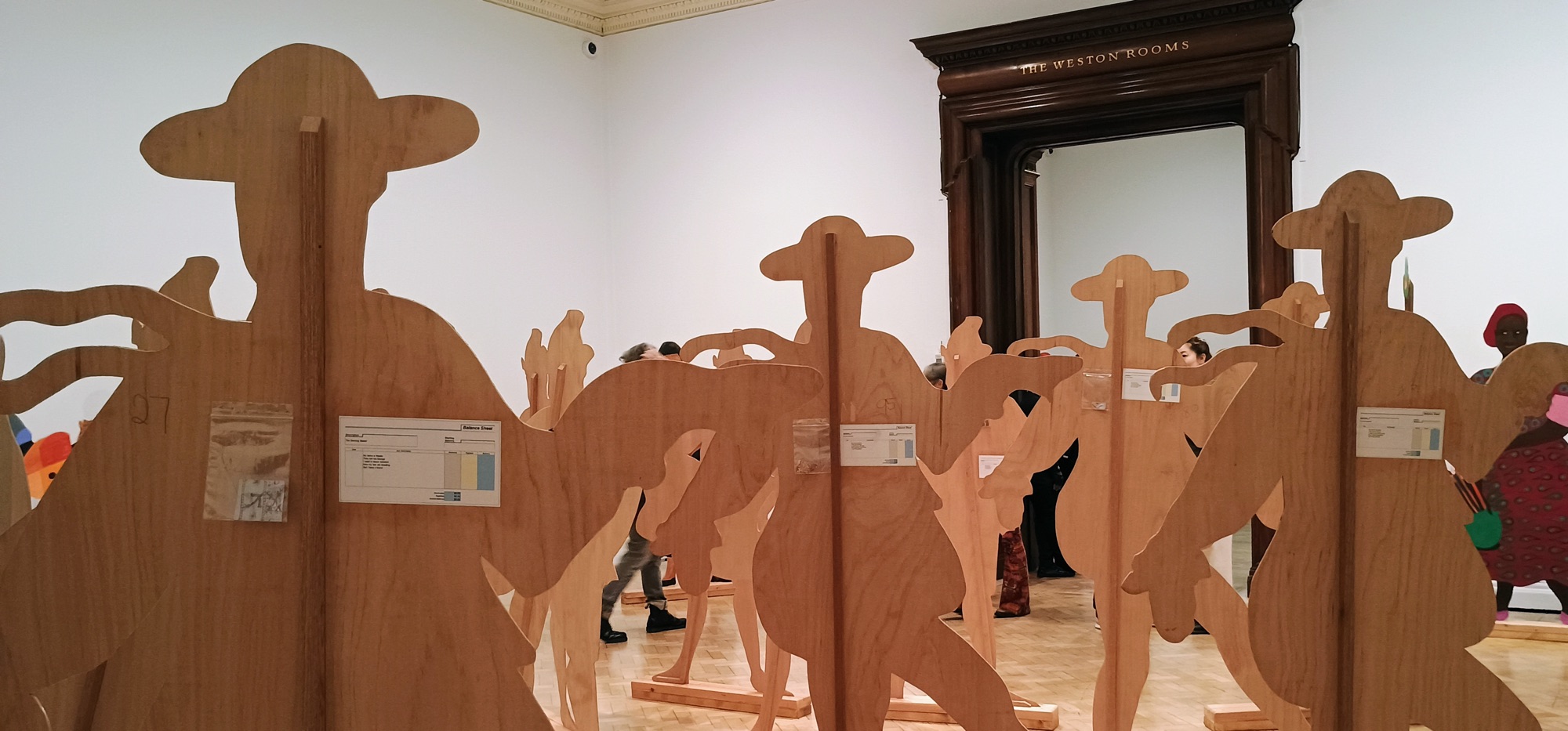Words by Debanjali Biswas. This article is part of our REWRITE series with CDS Artist Community.
As a dance artist with experiences of im/migration and as an anthropologist seeking to learn the various dimensions of dance impacted and introduced by transnational migration, I have found that movement for dancers of colour in Britain is an incontrovertible part of a legacy of colonialism and political ecology.
Dance as a bodily practice nuances, communicates, amplifies and even conceals the cultural lives of migrants’ old and new worlds. The dance that we see amidst us today, crawling under our skins, itching to be let out, carries with it a plethora of possibilities but also pain. While walking through a recent exhibition and experiencing the Notting Hill Carnival, I caught glimpses of artistic representations of migration; the exhibition articulating the experience of exclusion and the carnival of belonging. With these experiences, I found dance in erased, unwritten spaces and in histories that are in recovery.
Do we know them all?
Walking amongst Lubaina Himid’s mixed-media installation Naming the Money (2004) at the recently concluded ‘Entangled Pasts: 1768–Now: Art, Colonialism and Change’ exhibition, I was reminded there will always be many untold stories of dancers of colour in Britain. The striking mixed media installation comprised one hundred freestanding figures of African men and women, representing their servitude, oppression and commodification.

Standing amongst toymakers and viola da gamba players and herbalists, 10 figures seemed to dance as an ensemble, limbs raised loosely as if caught mid-movement to the music Himid put together in the exhibition playlist. The back of each figure was pasted with a piece of paper (like a balance sheet) or their imagined, individual story. Himid called them dance masters and named them twice – their invented names which their owners used to summon them, and their erased birth-names and past associations with dance from which they were torn away. Printed on their backs, words relay their reasons to dance:
| My name is Sanfu | My name is Masilo |
| They call me George | They call me George |
| I used to dance for a reason | I used to dance barefoot |
| Now I try to tell them how | Now my feet are bleeding |
| But I have my faith. | But I have a friend. |
The 10 dance masters were almost spectral in their presence. Few refrains of their movements exist today. Could we perhaps imagine these figures moving to music by the likes of fiddler Joseph Emidy, or teaching minuets composed by Ignatius Sancho, also known for creating dance works in the 1770s? Could we confront the histories of occlusion of minority and migrant lives by grieving the dances we will never know?
With a measured use of historical imagination, how could we honour Himid’s dance masters as stand-ins for creative and cultural workers of colour who contributed to artistic spaces in Britain but were lost to history?
Dancers on the streets
Between the 17th and 19th centuries, slaves stolen from their homelands held secret parties and street celebrations, wearing masks and elaborate outfits. In the throes of the carnivalesque, people far away from their homelands found a sense of identity and equality as long as the dances lasted.
This honouring remains threaded through thick social relations and cultural life, and in Black representation in more contemporary British society. Those who migrated from previously colonised countries from the 1950s gathered to survive or thrive in small conclaves all over Britain. However, for the early diaspora, the boundaries of joy were murky. The remnants of colonialism were burrowed deep into their celebrations. In the UK, fascist groups had carried out racial violence against Caribbean communities living in Nottingham and the Notting Hill area during the August bank holiday weekend of 1958.
In remembrance of the race riots, civil rights activist Claudia Jones launched a carnival to strengthen the Black British cultures, and in the following years, it moved to various enclosed venues. From 1966, the carnival began to take shape into the riotous assembly of music, dance and masquerade, snaking through the London neighbourhood of Notting Hill, gentrification of which began around the same time.
The legacy of the carnival is remembered differently. Some trace changes in police-immigrant relations and recall the violence at the 1976 carnival. Some celebrate the neighbourhood’s social fabric and the emergence of an autonomous Black British culture. Bands and troupes prepare for months to participate in the parade, and the rest march at one of the world’s largest street processions, dancing freely, reclaiming public place through dance.
Notting Hill Carnival is inconceivable without dancing. Every body is celebrated, invited to move. Many of the revellers know what they are moving to and remember the subversive power of music, movement and solidarity. On the one hand there are the grooves of Afro Swing, Grime, Garage, on the other there are Calypso, Soca, steelpans, and the gender encoded, audacious movements of daggering that has roots in Jamaican Dancehall. Amidst frissons of roiling energy and music, bodies are recast in dance and in new histories.



Danced, sung, drummed knowledge
Though many were lost to history, forging connections and meaning-making through dance (both within and outside the ethnic diasporic spaces) have been stronger than ever. An important foothold beyond the leisure culture of migrants’ Britain has been gained through securing a vocabulary of dance in cultural institutions and on prestigious stages.
Hundreds of dancers from migrant backgrounds work professionally – they train and they innovate, which in turn feeds popular dance aesthetics and eventually, opportunities, discourses and policies. What’s more, arts organisations have succeeded in heightening the profile of dancers of colour. Highly visible repertoires of performance have emerged from diasporic spaces for ever-changing audiences, at times coaxing us to remember the rigour and the artistry. We do them right when we remember what led to the vitality of these dance practices. We make it right when we cite the violence done upon the bodies of their ancestors, bringing them out of erasure.
The unknown dance masters whom Himid honours in the exhibition I happened upon, the movers we see in street carnivals, artists, archivists, activists drawing connections between past and present, tie experiences of exclusion, occlusion and belonging together.
A migrant’s dance world is made of many moving parts: hungry bodies, pulsating bodies. Kneading bodies, beaten bodies. Inarguably competent bodies. Bodies in grief, at loss, shaking, sleepless with broken hearts. Bodies unable to remain silent. Tethered bodies, untethered bodies. Foxy bodies, feral bodies. Bodies thrashing like Leviathans under the sea, bodies rising with smoke like a phoenix. Stilled bodies in museums, masked bodies in streets. Bodies reclaiming symbols of power – unbowed, vulnerable, beautiful.
Read our previous REWRITE article by So’l Jelenke here.
